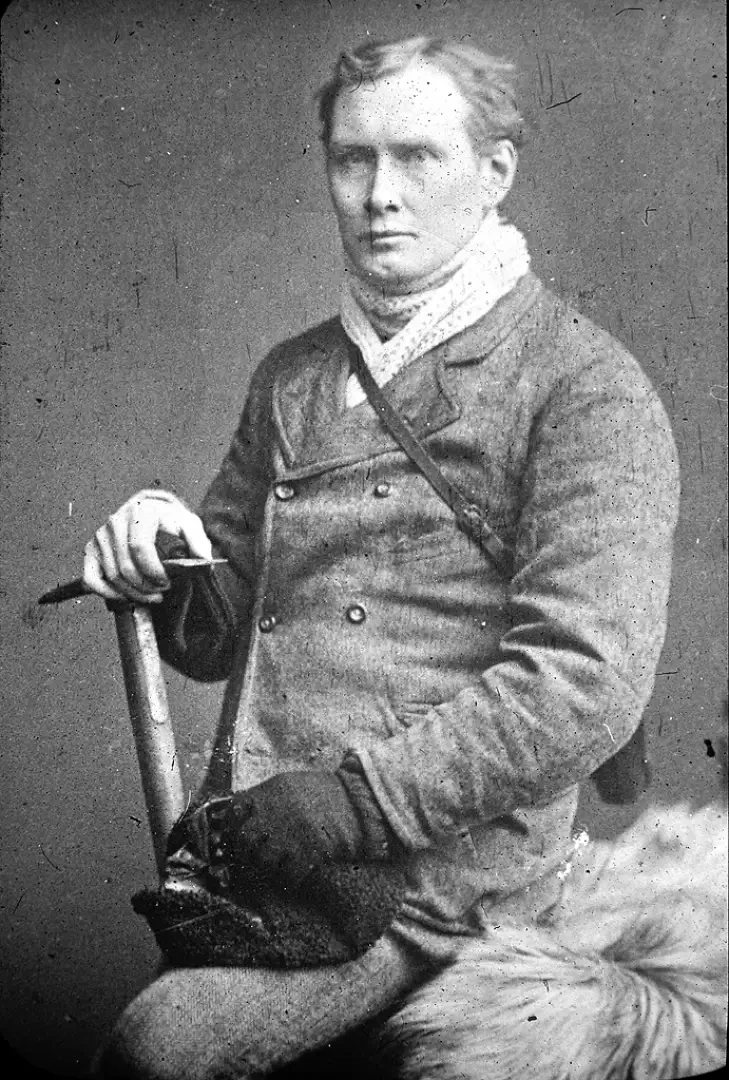
His name will forever remain in the history of mountaineering thanks to the first-ever conquest of the Matterhorn, an ascent that for centuries was unimaginable, then gradually became more and more feasible, until it triggered a veritable 'race' for the record. Among the other contenders were Jean-Antoine Carrel, Waughan Hawkings, Felice Giordano, John Tyndall, and a whole host of Swiss guides.
Whymper is not a mountaineer by birth, he is from London, and from a family originally from Holland: his father was a painter and his son inherited his talent, which he exercised by working in his parent's workshop. One day, a publisher offered him the opportunity that would revolutionise his whole life: to travel to the Alps for illustrations. Whymper was about twenty years old.
The impression that the mountains made on this young painter was enormous, but so was the encounter he had with his first great mountaineers: Walker, Kennedy and above all Leslie Stephen (Virginia Woolf's father). With the latter, he began his apprenticeship at high altitude, proving himself to be gifted with great physical means.
Returning home, he obtained a new assignment and rushed (1861) to Valtournenche, where he met Carrel and immediately got the impression that he was the right man to carry out the epic feat on the Gran Becca. The two attempted it several times and for several summers, together or separately, without ever reaching the summit, but feeding their respective frenzies. In any case, Whymper created a solid reputation by climbing a whole series of first-class mountains with illustrious guides such as Michel Croz and Christian Almer: Mont Dolent, the Dent Blanche, the Dent d'Hérens, the Grandes Jorasses, the Aiguille Verte and the Aiguille d'Argentière and several others.
The fateful summer of 1865 finally arrived, when Whymper and Carrel's paths parted: after yet another unsuccessful attempt, the mountaineer declared that he had to honour another mysterious commitment (with Giordano and Sella). The Englishman sees him off to the Matterhorn and, feeling betrayed, crosses the Teodulo pass and reaches Zermatt in a hurry. Here, fate seemed to help him: he formed a partnership with Michel Croz, the prestigious guide from Chamonix, and they were joined by his Swiss colleagues Taugwalder father and son, the young Lord Douglas, the 20-year-old M. Hadow (on his first ascent) and the Anglican Reverend Hudson. They attack via the Hörnli ridge, coincidentally the technically easiest, though apparently most 'airy' route. The expedition achieved rapid success and on 14 July reached the summit, from where it was possible to catch sight of the Carrel team, who had been trudging up the face for days (they were also to equip a route for the Giordano-Sella duo). On the way back, one of the catastrophes that most impressed public opinion at the time took place, leading to the idea of an official end to mountaineering: the inexperienced Hadow stumbled and dragged Douglas, Hudson and Croz into the void. Before the remaining three suffer the same fate, the rope breaks. Not only is the 'party' ruined, but also the lives of the survivors, enveloped in a whirlwind of controversy: why take with them a young novice and other pseudo-mountaineers of little reliability? Why was the rope used not the one intended for the purpose, but a somewhat battered spare? Could it have been that old Taugwalder panicked and deliberately cut the rope? These are just the main questions that animated the publicity of the time and which, in part, have never been ascertained. Certainly the two Swiss became a kind of pariah, shunned by all, 'unmentionables' bearers of misfortune. Whymper, on the other hand, decided to abandon technically demanding and too risky climbs, even though he found a way to lengthen the list of his exploits by involving Carrel in the extra-European ascents of Chimborazo (6130 m) and Cotopaxi (5943 m).
He retired to Chamonix and died there at the age of seventy-one.